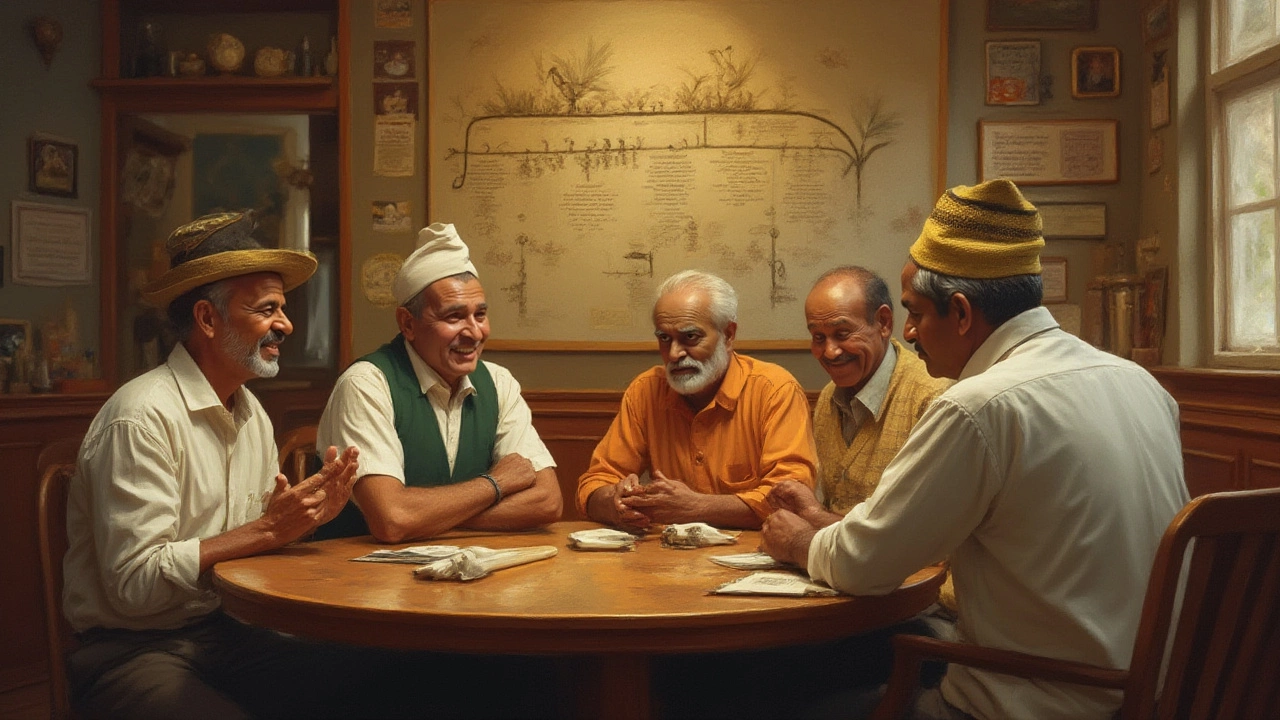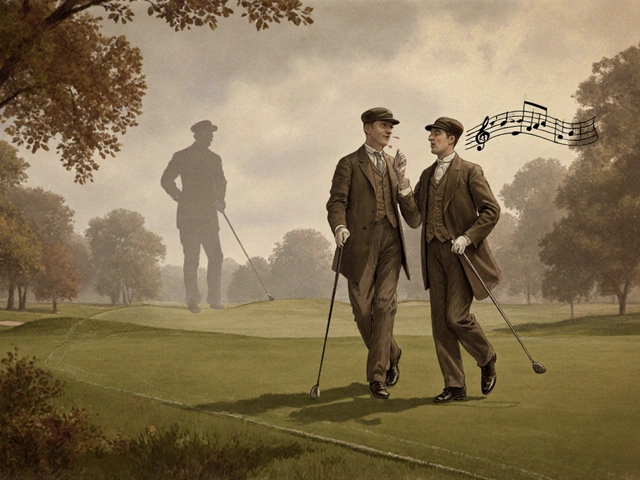Picture this: you’re standing on the green, club in hand, the flag fluttering just feet away. With a calm breath, you sink your putt—and your friend shouts, "That’s a birdie!" If you’ve ever wondered how a golf score picked up such a peculiar nickname, you’re not alone. ‘Birdie’ has fluttered through decades of golf history, yet few players know the backstory. The explanation isn’t buried in some stuffy old rulebook; it’s a quirky slice of golf’s colorful past, spiced up with slang, competition, and even a bit of luck.
The Birth of the Birdie: Oddball Slang on the Fairway
Let’s wind the clock back to the late 1800s, where the game of golf in America was still finding its personality. In those days, slang wasn’t just for kids provoking their parents; it spilled out on golf courses too. The term 'bird' was actually 19th-century slang for something excellent or wonderful—think of how we say something is 'cool' today. According to a letter and several firsthand accounts, the birth of the term ‘birdie’ happened at the Atlantic City Country Club in New Jersey around 1903.
Here’s the best retelling: Ab Smith, a regular at the club, hit a shot so good that someone in his group blurted out, "That was a bird of a shot!" The ball landed close to the hole, giving him a great chance for a score under par. Riding on this excitement, the group agreed that completing the hole one-under-par should be called a ‘birdie.’ The term just stuck. Pretty soon, golfers were chasing ‘birdies’ all over the course—embracing a fun, informal bit of language that sounded way more interesting than just “one under par.”
What’s extra sweet about golf lingo is its storytelling power. You’ll notice that other scoring terms, like ‘eagle’ and ‘albatross,’ grew out of the original ‘birdie,’ showing how one quirky moment can leave a long legacy. If you love details, the club where ‘birdie’ was born even commemorates the moment with a plaque—a small nod to big golf folklore.
How Birdie Caught On: From Club Chat to Golf Lore
You might think a word like ‘birdie’ would disappear after a few rounds with friends. But golfers love a good inside joke, and the term started spreading like wildfire. Back in the early 20th century, golf was exploding in the U.S., so new ideas and phrases crossed country clubs fast. By 1911, the term ‘birdie’ was in print in America’s key golf magazines, and British golfers soon adopted it too—though sometimes with a raised eyebrow, as the British tend to be a bit more traditional with their language.
Here’s a fun fact: the adoption of ‘birdie’ actually changed how communicative and friendly the game felt. Golf wasn’t just about strict, stuffy competition; it had a new playful side. The term gave players a reason not just to brag, but to celebrate small wins, which made the game more approachable, especially for newcomers. That approachable spirit still matters. If you think about what keeps people coming back to golf—high-fives after a birdie, groans after a bogey—the shared lingo lets everyone feel part of the tradition.
If you compare ‘birdie’ to other sports slang, it stands out. Baseball fans talk about ‘grand slams,’ and football has ‘touchdowns,’ but there’s something gentle and cheery about calling a top achievement after a bird. Maybe that’s why it took off so fast. Just imagine the alternative: “Congratulations, you scored a minus one stroke!” Not nearly as catchy, right?

Birdie by the Numbers: How Rare Is It?
Let’s cut to what most golfers really want to know: how hard is it to score a birdie? According to stats from the USGA, most recreational golfers make fewer than two birdies per round. The average player with a handicap between 15 and 20 will only get a birdie every 54 holes or so. That makes birdies something to celebrate—hence all the excitement when someone finally breaks through.
For pros, birdies seem almost routine. The top PGA Tour players can average over four birdies per round. Incredibly, Jim Furyk made 12 birdies in his record–breaking round of 58 at the Travelers Championship in 2016. That’s an outlier, of course, but it shows the thrill of stacking birdies together. Here’s a peek at just how birdies stack up among amateurs and experts:
| Player Type | Average Birdies per Round |
|---|---|
| Recreational (15-20 handicap) | 0.4 |
| Low Handicap (single digit) | 1.5–2.2 |
| PGA Tour Pro | 3.5–4.6 |
Chasing birdies isn’t just about bragging rights. It’s good for your brain and your game. When you’re aiming for a birdie, your strategy shifts. You think more about risk and reward and sharpen your focus on your approach shots. Even casual golfers say their favorite memories aren’t always their best rounds—they’re the moments when an unexpected birdie turns a struggle into a win.
Tips for Chasing Birdies: Play Smarter, Score Better
Birdies might be rare for most, but a few smart moves can help you grab a couple more. First off, know the holes where a birdie is legitimately possible for your skill level—usually shorter par-4s or reachable par-5s. Don’t take wild risks on holes where the odds aren’t in your favor. Instead, save your boldest shots for when the rewards truly outweigh the risks.
Course management is key. Professional golfers plan ahead—sometimes hitting an iron off the tee on a short hole, aiming for position instead of maximum distance. If you want to give yourself more birdie looks, focus on hitting the fairways and greens in regulation. A sloppy tee shot makes birdie almost impossible, so play for accuracy over power.
Approach shots really set up most birdies. Spend time dialing in your shorter irons and pitches. Stats even show that a majority of PGA Tour birdies happen when players hit their approach inside 15 feet. On the greens, practice holing putts from 6 to 12 feet. That’s where birdie putts so often live—and where confidence pays off.
Want to practice like the pros? Try these quick routines:
- Set up nine balls at different spots, all 15 feet from the cup. See how many you can drain in a row.
- Play "Birdie Challenge" with your buddies—keep score only for birdies to make practice competitive and fun.
- Watch your favorite tour pros. Notice how they manage risk versus reward—especially down the stretch.
- Record your rounds and track where your birdie chances actually come from. This helps you understand your real strengths.
And here’s a nugget regulars swear by: celebrate birdies, but don’t chase them too hard. Golf rewards patience, and it’s the steady players who rack up the most success—not the ones always swinging for miracle shots. Think like a bird: light, nimble, and always surveying the next opportunity.
So there you have it—the humble ‘birdie’ is more than just another golf term. It’s a symbol of the game’s charm, a wink to history, and a little reward for mastering the dance between risk and reward. Next time you nail a shot and someone calls it a birdie, you’ll know exactly why—and you’ll be ready to tell the tale.



